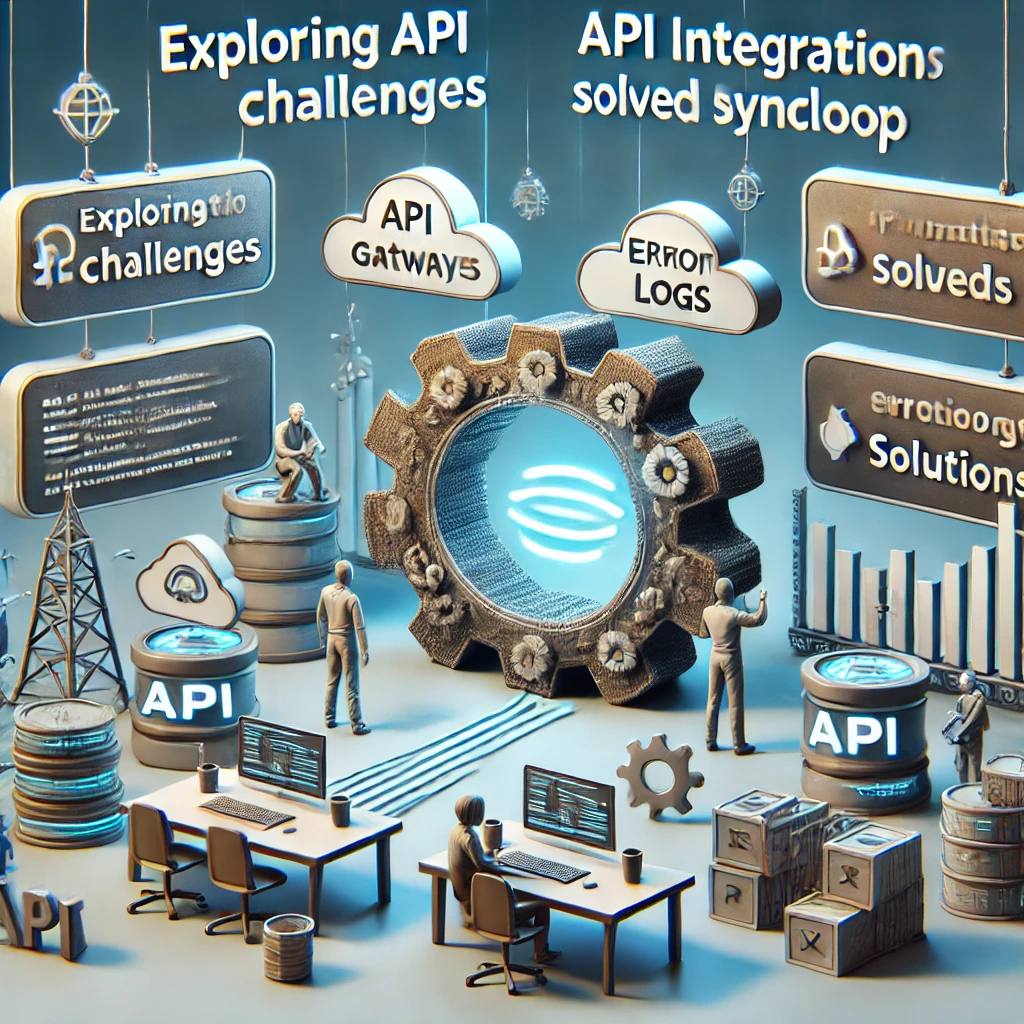Exploring API Integration Challenges Solved by Syncloop

Key API Integration Challenges
1. Incompatible Data Formats
- Issue: Different APIs often use diverse data formats, making direct communication difficult.
- Syncloop Solution: Syncloop’s Transformers dynamically convert data formats (e.g., JSON, XML, CSV) to ensure compatibility, eliminating the need for custom middleware.
2. Authentication and Security Complexities
- Issue: Ensuring secure and seamless authentication across APIs can be challenging, especially with multiple protocols like OAuth, API keys, and JWT.
- Syncloop Solution: Syncloop simplifies authentication with token management, encryption, and secure workflows, protecting sensitive data while streamlining access.
3. Performance Bottlenecks
- Issue: Integrations may fail under high traffic due to latency or insufficient resources.
- Syncloop Solution: Syncloop’s scalable architecture and dynamic load management ensure high performance even during traffic surges.
4. Error Handling and Debugging
- Issue: Identifying and resolving errors across integrated systems can be time-consuming and complex.
- Syncloop Solution: Detailed logging, real-time monitoring, and fallback workflows in Syncloop enable quick identification and resolution of errors.
5. Complex Workflow Orchestration
- Issue: Integrating APIs often involves orchestrating multi-step workflows with conditional logic and dependencies.
- Syncloop Solution: Syncloop’s visual workflow designer simplifies the orchestration of complex workflows, including conditional branching and parallel processing.
6. Scalability and Flexibility
- Issue: Static integration setups fail to scale with growing user demands or evolving business needs.
- Syncloop Solution: With dynamic scaling and customizable workflows, Syncloop ensures integrations are flexible and future-proof.
Features of Syncloop for API Integration
1. Dynamic Workflows
Automate and orchestrate multi-step processes with visual workflows, reducing development complexity.
2. Real-Time Monitoring
Track API interactions, latency, and error rates to ensure smooth operations and proactive troubleshooting.
3. Data Transformation
Standardize, enrich, and validate data to bridge the gap between incompatible systems.
4. Event-Driven Architecture
Trigger workflows dynamically based on real-time API events, ensuring timely responses.
5. Secure Integrations
Implement robust security measures like encryption, token-based authentication, and role-based access.
6. Scalable Infrastructure
Handle growing user demands with Syncloop’s dynamic scaling capabilities.
Real-World Use Cases
1. E-Commerce Platforms
- Challenge: Integrating multiple payment gateways with different protocols and formats.
- Syncloop Solution: Use Transformers to normalize payment data and secure token management for authentication.
2. Healthcare Systems
- Challenge: Synchronizing patient data across disparate systems while ensuring compliance.
- Syncloop Solution: Automate data synchronization workflows with secure encryption and real-time monitoring.
3. IoT Ecosystems
- Challenge: Collecting and processing data from heterogeneous IoT devices.
- Syncloop Solution: Transform and aggregate sensor data dynamically for analytics and decision-making.
4. Financial Services
- Challenge: Managing integrations with regulatory APIs for compliance reporting.
- Syncloop Solution: Automate compliance workflows with detailed logging and conditional branching.
Best Practices for API Integration with Syncloop
- Plan for Flexibility: Design workflows to adapt to changing requirements and new APIs.
- Monitor Continuously: Use real-time insights to identify and resolve integration issues promptly.
- Ensure Security: Implement robust authentication and encryption measures to protect data.
- Optimize Workflows: Automate repetitive tasks and streamline multi-step processes.
- Test Extensively: Validate integrations with diverse scenarios to ensure reliability.
Why Choose Syncloop for API Integration?
Syncloop offers a comprehensive platform for overcoming API integration challenges. Its powerful tools for workflow automation, monitoring, and data transformation make integrations seamless, secure, and scalable.
Conclusion
API integration challenges can hinder the efficiency and scalability of modern applications. Syncloop addresses these challenges with tools designed to simplify workflows, enhance security, and optimize performance. By leveraging Syncloop, organizations can unlock the full potential of their APIs and build interconnected systems that drive success.
Back to Blogs